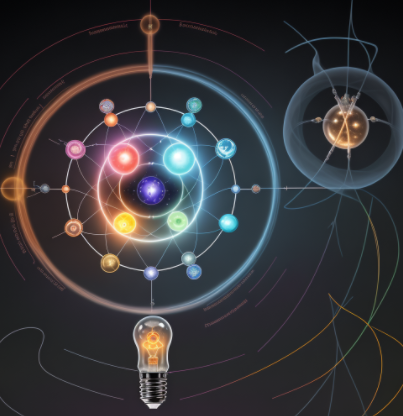The Building Blocks of Change: Understanding and Predicting Simple Chemical Reactions
Introduction
Have you ever wondered why rust forms on metal, or why a cut apple turns brown when left out? These everyday transformations are examples of chemical reactions happening right before our eyes. Chemical reactions are the fundamental processes that drive both the natural world and modern technology, from photosynthesis in plants to the batteries powering our devices.
Chemical reactions occur when substances interact to form new substances with different properties. Understanding these transformations is crucial for everyone from high school students to professional scientists, as they form the backbone of chemistry and influence countless aspects of our daily lives.
This article aims to demystify simple chemical reactions, providing readers with the tools to understand, predict, and recognize these transformations in both laboratory settings and everyday life.
Types of Chemical Reactions
Synthesis Reactions
When two or more substances combine to form a single new compound, we’re witnessing a synthesis reaction. This type of reaction follows the general pattern: A + B → AB.
One classic example is the formation of rust, where iron combines with oxygen in the presence of water: 4Fe + 3O₂ → 2Fe₂O₃
Synthesis reactions are fundamental in manufacturing processes, from producing ammonia for fertilizers to creating new materials for construction.
Decomposition Reactions
The opposite of synthesis, decomposition reactions occur when a single compound breaks down into simpler substances. These reactions follow the pattern: AB → A + B.
For instance, when hydrogen peroxide breaks down: 2H₂O₂ → 2H₂O + O₂
This reaction explains why hydrogen peroxide must be stored in dark bottles and why it bubbles when used as a disinfectant.
Signs and Evidence of Chemical Reactions
Observable Changes
Chemical reactions often announce themselves through visible changes:
- Color changes (like copper turning green)
- Formation of a precipitate (solid forming in a solution)
- Gas production (bubbles forming)
- Temperature changes (heating or cooling)
- Light emission (as in glow sticks)
These indicators help scientists and students identify when a chemical reaction is occurring, although not all reactions display obvious signs.
Energy Changes
Chemical reactions either release energy (exothermic) or absorb energy (endothermic):
- Exothermic reactions feel warm to touch (like hand warmers)
- Endothermic reactions feel cool (like instant cold packs)
Understanding energy changes helps predict reaction spontaneity and practical applications.
Predicting and Controlling Reactions
Factors Affecting Reaction Rates
Several key factors influence how quickly reactions occur:
- Temperature (higher temperatures generally speed up reactions)
- Concentration (more concentrated reactants react faster)
- Surface area (smaller particles react more quickly)
- Presence of catalysts (substances that speed up reactions without being consumed)
These factors can be manipulated to control reaction rates in both laboratory and industrial settings.
Balancing Chemical Equations
Predicting reaction outcomes requires understanding conservation of mass:
- Count atoms on both sides of the equation
- Use coefficients to balance the equation
- Verify that reactants and products have equal numbers of each type of atom
For example, balancing the combustion of methane: CH₄ + 2O₂ → CO₂ + 2H₂O
Resources for Educators and Students
To deepen understanding of chemical reactions, consider these hands-on activities:
Comprehensive Guide and Activities for Understanding and Predicting Simple Chemical Reactions
Conclusion
Chemical reactions are the engines of change in our world, transforming substances into new materials with different properties. By understanding the types of reactions, recognizing their signs, and knowing the factors that influence them, we can better appreciate and predict these fundamental processes.
Whether you’re a student studying chemistry, an educator teaching these concepts, or simply someone curious about the world around you, understanding chemical reactions provides insight into countless phenomena in our daily lives. Through careful observation and application of basic principles, anyone can begin to understand and predict these fascinating transformations.
Remember: Every time you cook food, light a match, or watch leaves change color in autumn, you’re witnessing chemical reactions in action. The more we understand these processes, the better equipped we are to harness their power and protect ourselves from their potential hazards.




